
CHI DESIGN: Domestic Abuse
UX Research | Experience Design | Interaction Design | Social Impact Design
Year
2025
Role
Product Designer
UX Researcher
Tools
Figma
Miro
Google Docs
Methods
Cultural Probe
Prototyping
Introduction
Domestic abuse often begins subtly and is normalized in many Southeast Asian cultures, making early detection difficult—especially for young adults. These individuals frequently lack role models or cultural space to talk about relationships.
What is Domestic Abuse?
Domestic abuse is a repeated pattern of control through psychological, emotional, sexual, physical, or financial harm.
Early Signs of Abuse
Abuse often starts with subtle behaviors—jealousy, control, isolation—that are mistaken for care. Normalized by culture and media, these signs are easy to overlook. Our project helps young adults recognize red flags early, before harm escalates.
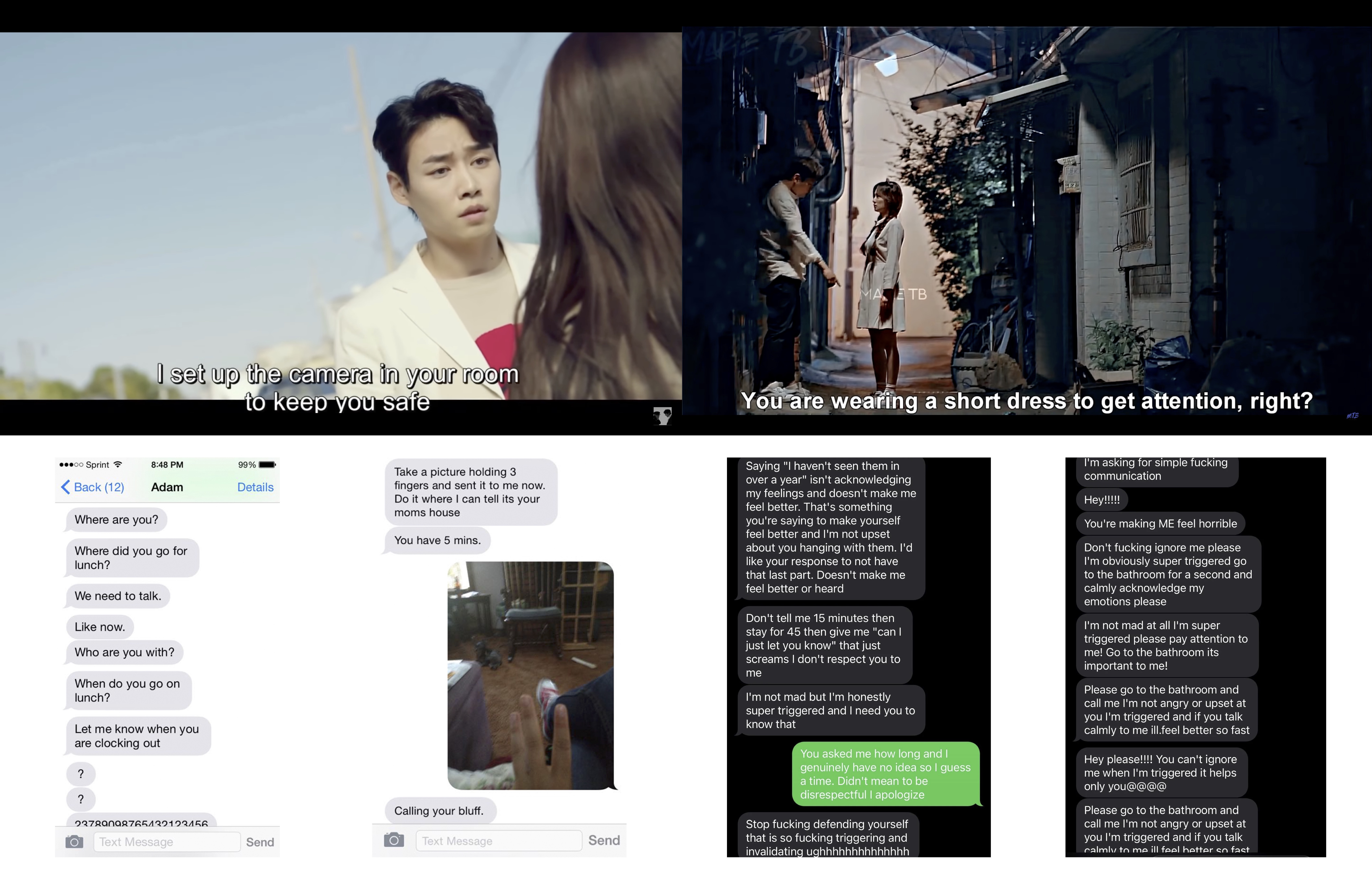
Screenshots from Dramas and Google
User Scenario
Jane is a young adult in the early stages of her first relationship. She needs a benchmark for healthy relationships because it will help her identify abusive behaviors, engage in conversations, find resources, and challenge harmful social norms to improve her relationship.
How might we help young adults in their first relationships identify early signs of emotional abuse—without making them feel judged, defensive, or unsafe?
Research
- Primary interview with a survivor of early relationship abuse
- Cultural analysis through Reddit posts
- Secondary research
Cultural Patterns Identified
- Abuse often starts with subtle control or manipulation
- Victims romanticize red flags as signs of deep love
- Shame, stigma, and social norms prevent open conversations
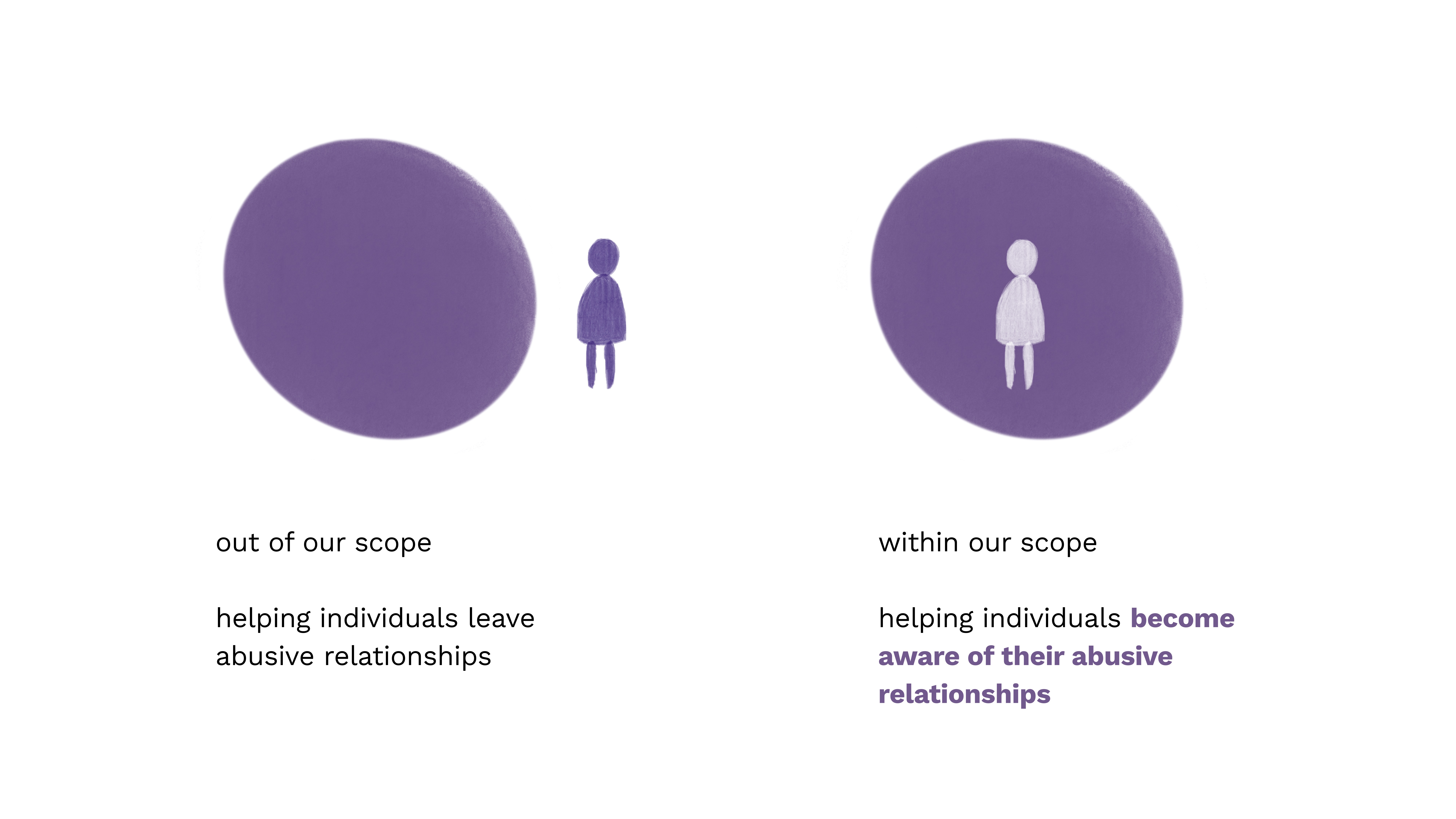
Concept Evolution
- Gamified quizzes on red vs. green flags
- Dating 101 museum exhibit
- Role-play simulations for emotional regulation
Why We Pivoted
Gamification risked trivializing trauma. Role-playing could be triggering. Instead, we pursued a culturally-grounded, immersive exhibition to raise awareness through storytelling, metaphor, and interaction.
Final Solution
Our final solution is an exhibition leading users through various immersive and interactive experiences.

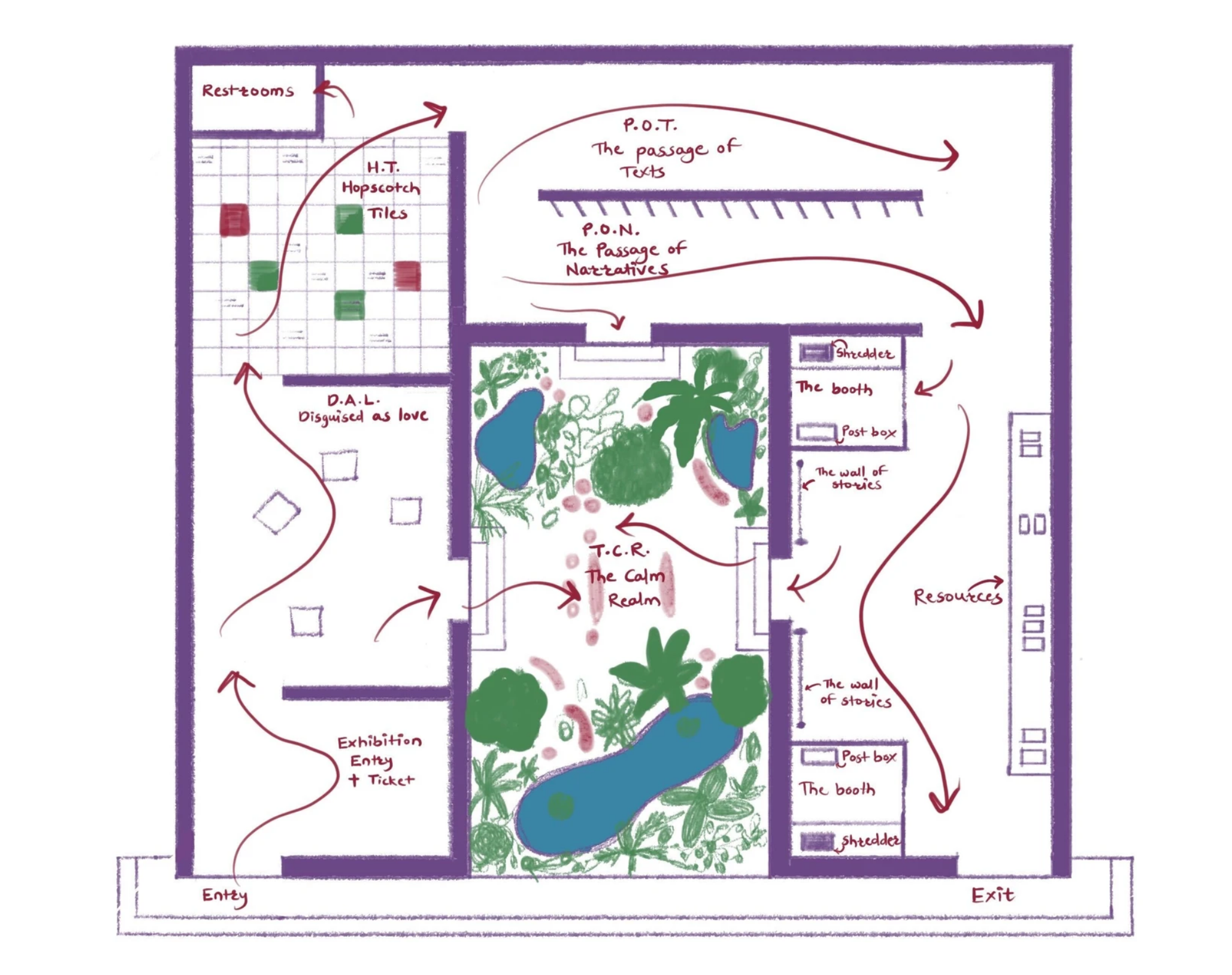
Target Audience for the Exhibition
We focus on friend groups to encourage open reflection and conversation about relationships, avoiding the tension that may arise when couples attend together.


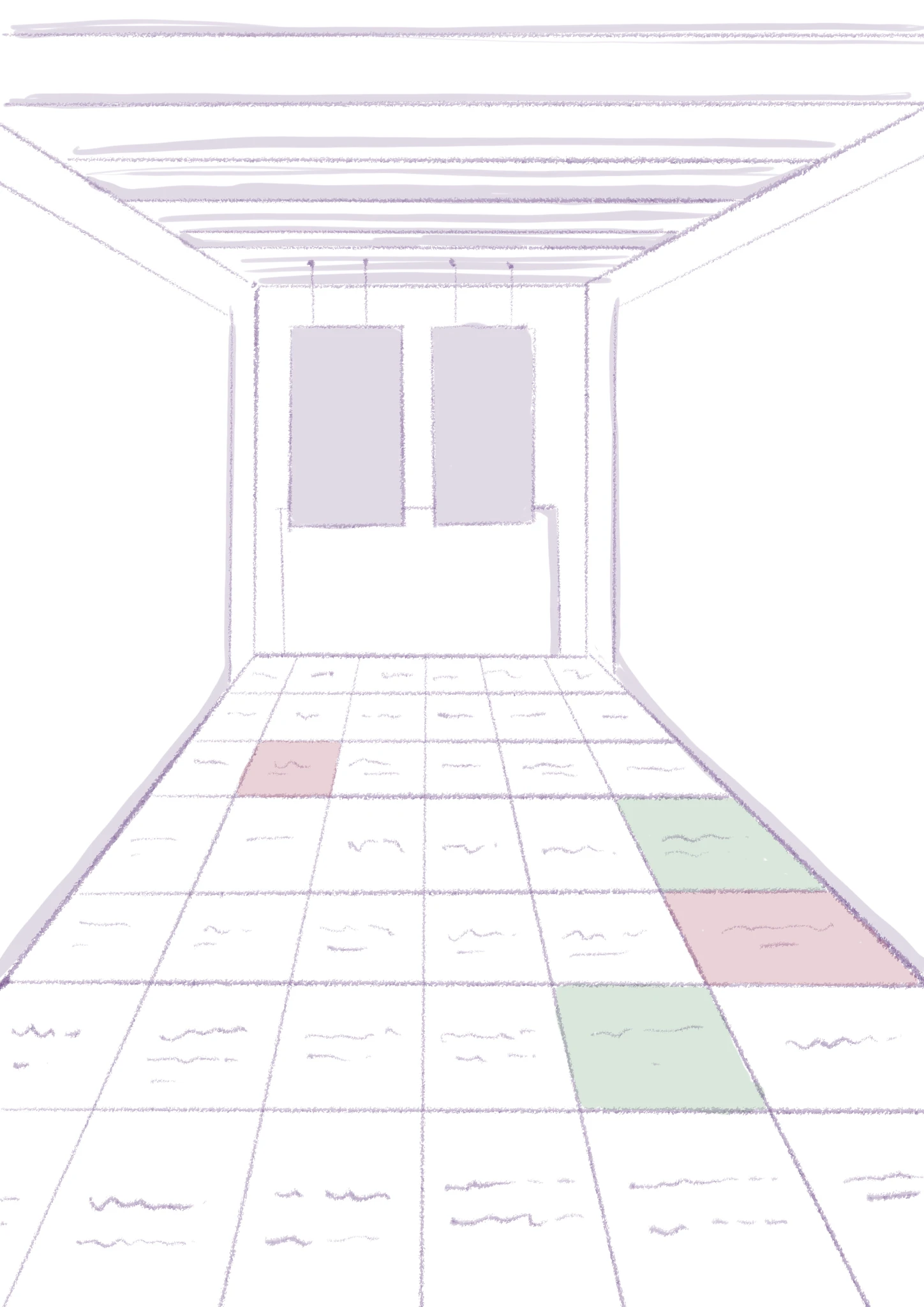
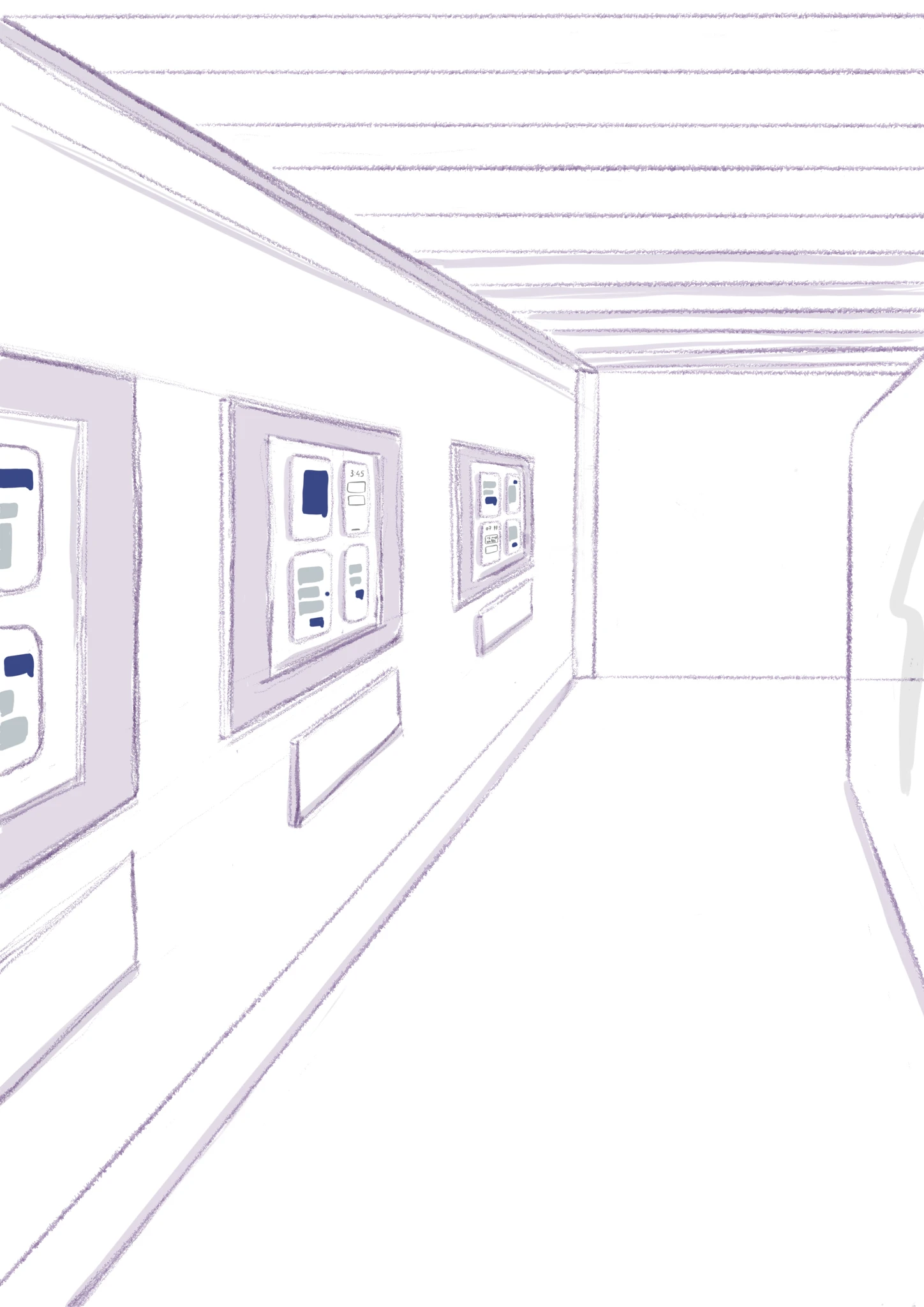

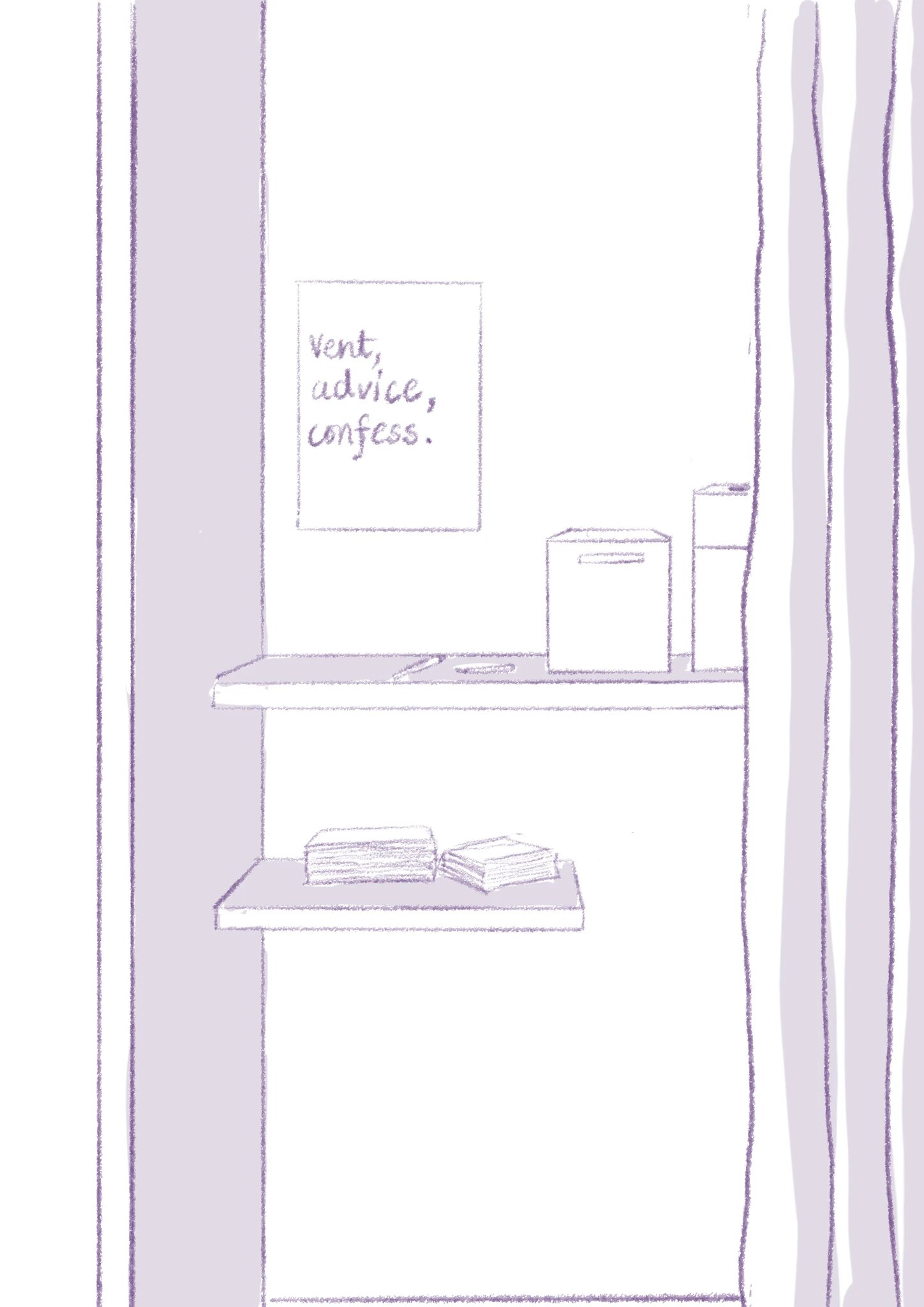
Visitors can anonymously share advice or thoughts on abuse, which staff can display on a board. In the resources area, participants can take brochures with abuse definitions, hotline contacts, and a QR code linking to shelters, NGOs, and counseling services.
User Testing & Feedback
Process:
- In-person walkthroughs using paper prototypes and projectors
- Consent-based feedback sessions with young adults
- Emotional safety checks for every exhibit room
Notable Feedback:
- The exhibition feels non-judgmental and relatable
- Interactive elements like tiles and mirrors were highly engaging
- Visitors preferred visiting with friends for reflection and discussion